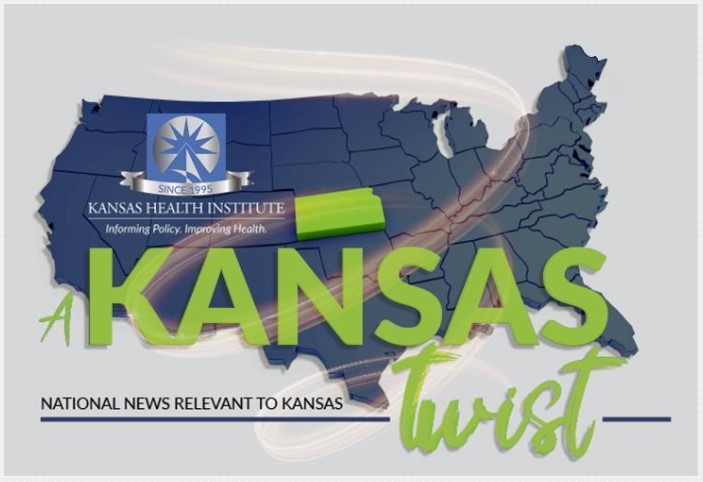The national landscape is changing rapidly in medical and recreational marijuana research and policy. Right here in Kansas there have been three bills introduced so far this legislative session. This edition of A Kansas Twist provides an update on this quickly moving issue.
Sign up here to receive these summaries and more, and also follow KHI on Facebook, Twitter and LinkedIn. Previous editions of A Kansas Twist can be found on our ARCHIVE PAGE.
Three bills related to marijuana have been introduced in the Kansas Legislature so far this session, and action to date includes hearings on House Bill 2686 in House Corrections and Juvenile Justice Committee on February 19, 2020, and Senate Bill 449 in Senate Agriculture and Natural Resources Committee on February 21, 2020. It remains to be seen how changes in the marijuana-related laws across the United States and evolving research will impact decisions in Kansas.
HB 2686 would remove the felony violation of possession of marijuana and release people currently in prison for such violations. SB 449, and its House version (HB 2709), would remove marijuana products that contain up to 0.3 percent THC from the list of controlled substances listed in Schedule I of the Uniform Controlled Substances Act.
Recreational marijuana is now legal in 11 states, plus the District of Columbia and two territories, and all but four states – Kansas, Nebraska, South Dakota and Idaho – have a medical marijuana program. Although marijuana is legal for recreational or medical use, or both, in most states, it remains a Schedule 1 drug at the federal level. Marijuana is not approved by the U.S. Food and Drug Administration (FDA) as a medicine. With the expanded sales and marketing of CBD-related products across the states, FDA raised red flags and issued warnings to 15 companies for illegally selling products containing CBD.
The research around medical and recreational marijuana continues to evolve. Although this list is not comprehensive, recent studies have focused on understanding marijuana use by college students, the effect of legalization of marijuana on binge drinking among college students, the association between medical marijuana laws and opioid mortality, and the relationship between the use of marijuana and development of psychosis:
-
- Use of marijuana: The use of marijuana among college students in 2018 was at the highest level in 35 years, and vaping of marijuana doubled for college students between 2017 and 2018. The study raises concerns about the potential negative impact of this increase on students’ academic performance and ability to graduate.
- Lung injury: Lung injury has been associated with the use of THC-containing e-cigarette, or vaping, products. As of January 21, 2020, a total of 2,711 hospitalizations due to E-cigarette or Vaping use Associated Lung Injury (EVALI) cases have been reported to CDC from all 50 states, the District of Columbia, and two U.S. territories. In Kansas there have been 27 confirmed or probable cases, and two EVALI-associated deaths.
- Binge drinking: Legalization of recreational marijuana was associated with decreased binge drinking among college students age 21 and older, and increased sedative use among younger college students.
- Psychosis: Daily marijuana use was associated with an increased chance of developing psychosis compared with those who never used. This increased chance was nearly five times greater for those who smoked high-potency marijuana on a daily basis.
- Opioid mortality: One of the key studies published in 2014 suggested that states with medical marijuana laws experienced slower increases in opioid analgesic overdose mortality. A 2019 study extended the original analysis and found that these findings didn’t hold over a longer period of time. The study cautions against drawing associations between medical marijuana laws and changes in opioid overdose mortality.
Generating tax revenue from marijuana sales has been another issue of interest to many states. According to the Tax Policy Center at the Urban Institute and Brookings Institution, tax rates range from 10 percent in Nevada to 37 percent in Washington. The states have allocated at least a portion of the revenue to specific programs, including programs related to drug use, economic development, academic studies, youth programs, public safety programs, health care programs and programs aimed at reducing repeat criminal offenses.
How to incorporate these new and evolving findings into the policymaking process presents a challenge to Kansas decision makers looking to use the best information. However, the findings also shed light on many of the issues at the center of the medical marijuana debate.
As the topic of legalization of medical marijuana continues to be discussed in Kansas, KHI will continue monitoring policy and research developments across the country. If you haven’t already, be sure to see our earlier work on this topic, including the 2019 brief, Medical Marijuana: Policy Considerations, summarizing the national landscape of state marijuana laws and an overview of research findings related to the effects of marijuana; and the comprehensive Health Impact Assessment on medical marijuana published by the Kansas Health Institute in 2015.
